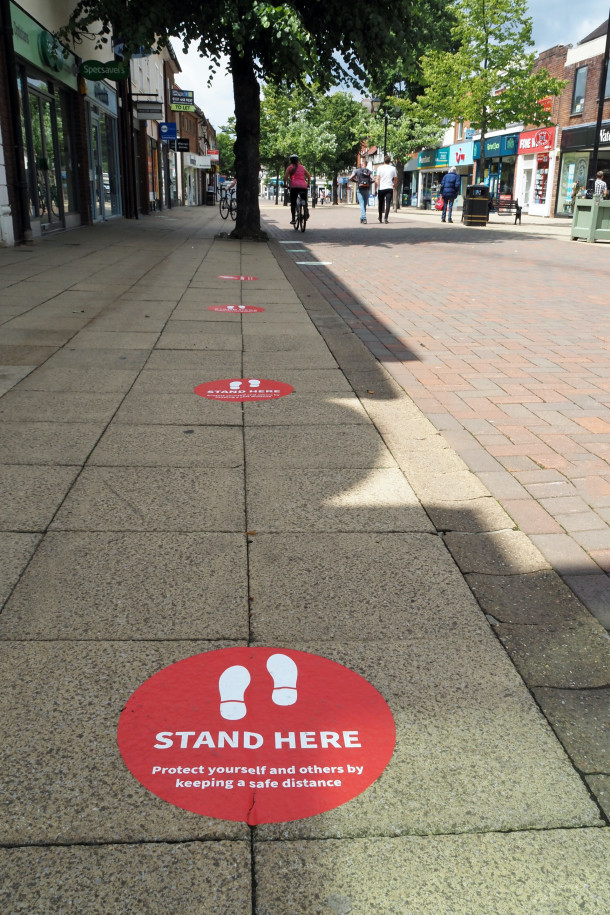
Julie-Ann Gylaitis on Unsplash
Tactical Urbanism as a response during the pandemic
Cities have taken the lead in stopping the spread of COVID-19. By adapting the use of public space, local governments have shown their intention to meet the new needs of citizens. In this sense, tactical urbanism is proving to be a powerful tool to find quick and low-cost solutions to urban problems. In this context, Metropolis, in collaboration with the United Nations Development Program (UNDP), organised a webinar on 28 October titled “Ibero-American experiences of tactical urbanism against COVID-19”.
“According to UN-Habitat, 95% of COVID-19 cases are concentrated in large cities—this is an urban pandemic!", Octavi De la Varga
Metropolis Secretary General Octavi De la Varga opened the session with a description of the current context: “According to UN-Habitat, 95% of COVID-19 cases are concentrated in large cities—this is an urban pandemic! As a result, local governments have had to adapt quickly to meet these new challenges."
De la Varga gave the floor to 6 representatives from urban planning and sustainable mobility departments from the Barcelona Metropolitan Area, Guatemala City, Medellín and Mexico City. Illustrating practical and local responses to transform urban spaces, they detailed the social impact of tactical urbanism projects put in place during the pandemic.
To kick off the contributions, Carlos Alejandro Soberanis Toledo, Deputy Mayor of Guatemala City, together with his colleagues Emilio Vargas Díaz, Head of Urban Planning, and José Miguel Benítez Pacheco, Director of Social Communication, presented the “Santiago Plan”. In order to improve quality of life, increase opportunities and create jobs, Guatemala has developed a programme in response to the pandemic, which includes three phases: containment, mitigation, and the new normal. In particular, Mr. Vargas highlighted the new “handbook for the use of public space, which aims to establish guidelines to adapt to the new normal.”
“Tactical urbanism and ‘restructured urban planning’ can coexist and communicate with each other.”, Silvia Casorran
Following the conversation, Silvia Casorran, Head of the Bicycle Office at the Barcelona Metropolitan Area, described the four strategies developed by the government to tackle the new challenges facing mobility: expanding pedestrian areas, creating a new 21 km network of cycle lanes, studying and implementing safer routes, and active communication with citizens. Interestingly, she insisted on the temporary nature of tactical urbanism, stating: “In some areas, we have not implemented a ‘tactical urbanism’ project but rather ‘restructured urban planning’.” She went on to add: “Tactical urbanism and ‘restructured urban planning’ can coexist and communicate with each other.”
“We understand tactical urbanism as an opportunity to give cities a more human component, at the same time as we face the challenges of COVID-19”, Nicolás Rivillas
A different perspective was given by Nicolás Rivillas, Assistant Manager of Design and Innovation of the Urban Development Company of Medellín: “We think of tactical urbanism as a component of infrastructure”. He added: “We understand tactical urbanism as an opportunity to give cities a more human component, at the same time as we face the challenges of COVID-19”. Explaining this point further, Mr. Rivillas insisted on the need to understand the context-specific situation, and to be resilient to Covid-19. “In Medellin, apart from the challenge posed by Covid, we have a number of pre-existing issues that force us to be much more proactive in taking action in the region, and tactical urbanism has become the healthiest and most actionable way to do this.”
“We develop very simple projects. Many of the elements we use are recycled, and this makes the process faster.”, Constanza Delón
The final contribution from local governments came from Constanza Delón Córdoba from the Secretariat for Mobility in Mexico City, who presented the Outdoor City (Ciudad al Aire Libre) programme. Explaining the many difficulties facing the metropolitan area, which has 19 million commuters every day, she explained that there has been a very positive social response to the new interventions. Tactical urbanism has made it possible to implement 67 km of new cycle lanes in Mexico City. “We develop very simple projects. Many of the elements we use are recycled, and this makes the process faster.”
Diana Lopez Caramazana, Partnership Specialist for the “Cities and Urbanisation” programme at UNDP, concluded the session by underlying the crucial role that urban spaces are playing during the pandemic. She stated that “cities are spaces where everything is interconnected, systems of communicating vessels that need a holistic vision to design responses to urban challenges and ensure a better quality of life.”
Did you miss the webinar? You can watch the full debate by clicking here.

